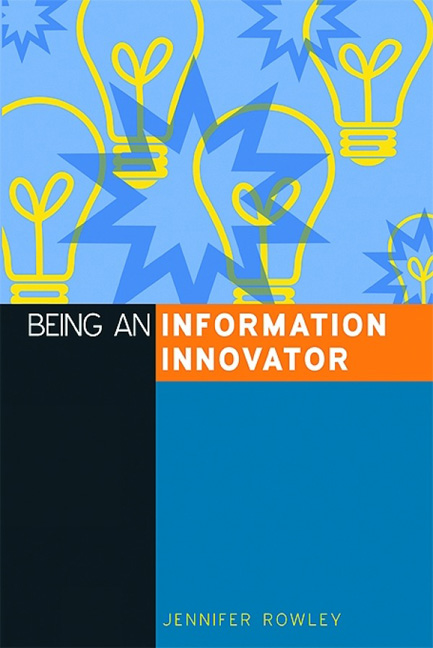2 - Innovation Co-authored by Anahita Baregheh
Published online by Cambridge University Press: 08 June 2018
Summary
Learning objectives
After reading this chapter you should be able to:
• Understand the key attributes of ‘innovation’.
• Appreciate the need for innovations with different extents and impacts.
• Appreciate the range of different types of innovation, and understand the relationships between them.
• Discuss the role of information systems (IS) in innovation.
• Understand the relevance of ‘innovation orientation’ for organizations.
• Discuss innovation as a managed process.
• Understand aspects of the innovation diffusion and adoption process.
Introduction
Chapter 1 offered some preliminary definitions of innovation, and discussed the importance of innovation and change in information organizations. This chapter develops the theme of innovation further by introducing a range of theoretical concepts from the ever expanding literature on innovation. This chapter, together with the chapter that follows on entrepreneurship, is designed to provide a focused overview of concepts and frameworks that can be used by information practitioners to reflect on, articulate and discuss the innovation processes in which they participate, or have responsibility for initiating, planning or promoting.
This chapter commences with a discussion of what can be described as the attributes of innovation; this section introduces a range of innovation concepts that are discussed further later in the chapter. Next, the nature or degree of novelty of innovation is discussed. This is followed by a section that outlines and discusses the different types of innovation, and the relationship between those types of innovation. The subsequent section briefly explores the relationship between information systems and innovation. This is followed by two sections that introduce different aspects of organizing for innovation, innovation orientation and innovation management. The chapter concludes with a discussion of the important concept of innovation diffusion and adoption.
What is innovation?
In Chapter 1 we discussed how many different definitions of innovation have been put forward, created by different authors at different points in time, and most significantly grounded in different disciplinary perspectives, such as business and management, organization studies, and science and technology.
- Type
- Chapter
- Information
- Being an Information Innovator , pp. 31 - 62Publisher: FacetPrint publication year: 2010

